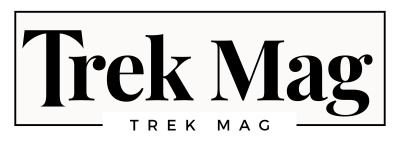Inspiring a team is an important part of great leadership. Sharing motivational quotes can be an effective, easy way to help raise spirits, inspire positivity, and remind them about goals. There is really a fine line between sending an uplifting message and crossing over to sounding too cheesy or insincere. So, how can you share motivational quotes that feel genuine, relevant, and timely? This article presents some helpful insights into sending motivational quotes to your team without coming off as cheesy or outdated.
1. Understand Your Team’s Values and Goals
It starts with an understanding of what your team is driven towards: personal growth, teamwork, achievement. Taking the time necessary to learn about your team’s values and goals will go a long way in helping you choose quotes that ring genuinely. A team of innovators may love quotes from industry pioneers, while a customer service team may appreciate encouraging words about empathy and staying the course.
Takeaway: Aim for quotes relevant to what your team is currently working on or trying to accomplish. If your team is pushing through a hard project, a quote that speaks to resilience can feel timely and fitting. The quotes that relate directly to your team’s work will come across as more sincere and applicable than being merely “inserted” just for the sake of being inspirational.
2. Refrain from Overused Clichés
Nothing sucks the motivational wind out of a quote as fast as trite, overused sayings. Quotes you hear from every person everywhere, like “keep calm and carry on,” will make your message read as generic and unoriginal. Instead, try fresh quotes that are lesser-known and thus not as predictable.
Quotes can be found from many sources: literature, personalities in the industry, even historical figures. For instance, a deep quote from Maya Angelou, a famous author, or Richard Branson, an entrepreneur, would amaze your team and be much more powerful than the ordinary saying.
Tip: Find quotes by authors or speakers that fall in line with your team’s interests or the industry. If your team is working in the technology arena, a quote from innovators like Elon Musk or Steve Jobs would mean more than any generic sayings.
3. Personalise the Message
It is not very personal to send an isolated quote. Put a human touch on it, such as by saying why that quote touches a cord or what that quote has to do with what your team does. Just add a few sentences setting in context, or giving your view-that shows you’ve thought about what the quote and why it matters to your team.
For example, you might email: “As we come to the end of this hard quarter, I read this from Winston Churchill: ‘Success is not final; failure is not fatal: It is the courage to continue that counts.’ This brought our journey as a team to my mind and the pride I have for everyone’s perseverance.”
Tip: Use concrete examples or even references to the most recent accomplishments you and your team have achieved. This will not only make it more personal, but will give credit to the effort given by them and connect the quote with a real-life accomplishment.
4. Simple and Natural
When it comes to sending motivational quotes, less is more. Many times, a quote is most appropriately just sent in an email, in a team message, or at a meeting without fanfare. In other words, send them without theatrics or dramatic flair. A simple presentation allows the quote to speak for itself and thus to be much more effective without coming off contrived.
For instance, you can simply place a quote at the bottom of an email. You can add this quote as a subtle touch, not necessarily the focal point. This way, the message can come across naturally without going overboard.
Tip: Timing counts, too. Only share motivational quotes occasionally, so that they remain special and not something that happens every day. One well-placed quote at the beginning of a tough week, or as part of a team meeting, can do more good than quotes every single day, which often lose their meaning after some time.
5. Use Quotes That Reflect Your Team’s Experiences
Quotes on shared experiences will more likely have an echo with your team. Let’s say that your team has been doing a lot of overtime; a quote about resilience or teamwork will be appropriate for them. It shows that you know what your team is feeling, and sometimes it’s even more genuine.
Also, check for quotes that fall within the area of relevance to the industry or challenges that your team faces. If you lead a creative team, then quotes that focus on inspiration and the creative process would be more relevant. Quotes about persistence and relationships would prompt a sales team into action.
Tip: When you can, include quotes from the team members themselves. Acknowledge and celebrate all the encouragement and motivational words your team shares with one another. More often than not, this has the tendency to be a very personalised yet different way of highlighting from within the team that you value and appreciate the positivity displayed within.
6. Incorporate Visuals Thoughtfully
You add a whole different level of power to the message if you incorporate quotes into visuals. A nicely designed quote graphic can actually make the words more engaging if the visuals are aligned with the message. Try pairing it with imagery that sets a scenery of landscape, cityscape, or even a very minimalistic clean design to complement the text. This can really make the quote shine and feel new and motivational.
You could say, “If you’re sharing a quote about sunsets, you can attach an awesome photo of a sunset that feels really calming or reflective.” With the addition of thoughtful visuals, you help make the quote more memorable and less just another block of text.
Tip: Design some simple quote graphics using tools like Canva or Adobe Spark. This will add a little something extra to make your motivational message pop and look as if you’ve put thought into delivering it in a creative way.
7. Vary the Format
Instead of always sending quotes via email or over a team chat, mix up the medium to make things a bit more interesting. You may print out a quote and put it on the notice board, include it in one of your presentation slides, or even start off a meeting by reading a quote. For remote teams, this can be done during a video call or by having a motivation-inspiration thread specifically in a team’s Slack channel.
This helps avoid making the delivery monotonous and does something different from the more standard method of delivering motivational messages. Another reason is that different formats may capture your team’s attention much better than some other format and offer them a different experience each time.
Tip: If you head a hybrid team, prepare quotes visible to all irrespective of the location. For example, create an online notice board where in-office and remote workers can view the quotes and add their favourite quotes there.
Conclusion
Inspirational quotes can be a potent tool to lift up team morale, provided it is given out with integrity, thoughtfulness, and relevance. With quote selection that mirrors your team’s values, adding a personal touch, and visuals, you’ll create inspiring messages without the cheesy or overused feel. Whether it’s resilience, teamwork, or sunset quotes that call for reflection, the right words will hit home with your team and might give them just a little more encouragement on the workday.








